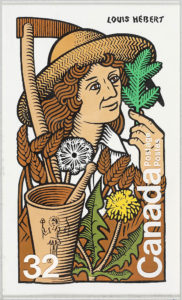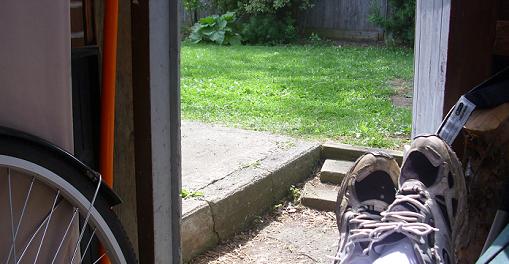 Hail, Beer!
Hail, Beer!
In all thy forms of Porter, Stingo, Stout,
Swipes, Double-X, Ale, Heavy, Out-and-out,
Most dear,
Hail! thou that mak’st man’s heart as big as Jove’s!
Of Ceres’ gifts the best!
That furnishest
A cure for all our griefs: a barm for all our—loaves!
Oh! Sir John Barleycorn, thou glorious Knight of
Malt-a!
May thy fame never alter!
Great Britain’s Bacchus! pardon all our failings,
And with thy ale ease all our ailings!
That’s the first bit of “Ode to Beer” from the Comic Almanack for 1837. What a jolly bauble. Exactly what we largely like to tell ourselves about the merry merry world of the past. Dickens without all the bad bits. The view from outside the Bermondsey¹ public house, as above, in 1854. As we all rush about finding older records to share about beer and brewing in, mainly, the English speaking world, I have wondered about the difference between the official record and the actual experience. By official, I don’t mean governmental or even sanitized so much as the accepted. The approved version. One of the biggest problems leading to the approved version is the love of drawing conclusions or, more honestly perhaps, the use of records to justify comfortable conclusions. We want things to be explicable but we want to be comforted. For authority to be correct we want it to align with out needs. It rarely does. But authorities won’t tell you that. Authority has another interest. Consider this passage in a book entitled England as Seen by an American Banker: Notes of a Pedestrian Tour by Claudius Buchanan Patten published in 1885:
I was at some pains to get at the following authentic statement of methods of beer adulteration. A member of London’s committee on sewers —an eminent scientist — puts forth the declaration that “It is well known that the publicans, almost without exception, reduce their liquors with water after they are received from the brewer. The proportion in which this is added to the beer at the better class of houses is nine gallons per puncheon, and in second-rate establishments the quantity of water is doubled. This must be compensated for by the addition of ingredients which give the appearance of strength, and a mixture is openly sold for the purpose. The composition of it varies in different cases, for each expert has his own particular nostrum. The chief ingredients, however, are a saccharine body, as foots and licorice to sweeten it; a bitter principle, as gentian, quassia, sumach, and terra japonica, to give astringency; a thickening material, as linseed, to give body; a coloring matter, as burnt sugar, to darken it; cocculus indicus, to give a false strength; and common salt, capsicum, copperas, and Dantzic spruce, to produce a head, as well as to impart certain refinements of flavor. In the case of ale, its apparent strength is restored with bitters and sugar-candy.”
Now, this is interesting. And not because all the horrible gak was added to beer back then as it is being again added to beer now. But because it includes the admission of wide spread watering down at the pub. Watered down poisonous gak. Which leads to the question of what people were really experiencing as they looked down into the murky depths of a pewter quart pot a century and a half ago. It makes me wonder it might mean for all those records Ron has dug out of public libraries and brewery attics. The badness of beer by these sorts of additives appears to have arisen after legal changes in 1862 as The British Farmer’s Magazine advised in 1875. But there are other issues, more to do with quantity than quality. This passage from The Farmer’s Magazine of 1800 is simply depressing:
There are some persons who do not drink malt liquor at all; most people of fortune and fashion drink it very sparingly; while great numbers of the lower orders, particularly coalheavers, anchor-smiths, porters, &c. drink it to great excess, even, it Is supposed, to the amount of five hundred, or one thousand gallons a year each. Upon the whole, I apprehend the quantity of malt liquor consumed in the county, would almost average a hundred gallons per head of all ages and conditions. One thousand gallons per annum, is nearly, on an average, about 14 bottles of ale or porter per day, and is almost equal to what is passed through many drains, made to carry off the superabundant moisture from the earth… upwards of three millions of money are expended by the labouring people, upon ale, porter, gin, and compounds, which is 25I. per family of that description of persons. If wages, on an average, be 12s per week, the amount per ann. is 32I. 4s. which leaves only 7I. 4s. for purchasing bread, butcher meat, vegetables, and clothes!
Holy frig. Perhaps we might take a moment to thank our lucky stars that we are not living when our great-great-great-great-great-great-great-grandparents were scraping together their existence. When I tweeted the stats in that passage above, the good hearted Lars responded “I would guess a large proportion of that was small beer.” One does live in hope but, really, it’s unlikely isn’t it. The life of the industrial labourer and his family was simply horrible before the public health movement. In 1835, harvesting labourers required a gallon of beer every day for a month. In that same issue of The Farmer’s Magazine that that fact came from, there is a very interesting suggestion in an argument on why public houses were not going away despite their menace, why the labouring man had no choice:
…as to the temptation of company at the public-house or the beer-shop, would it not exist in precisely the same degree if the labourer had a cask of beer in his cellar brewed by himself, as if he had a cask purchased of the public brewer? If there were a disposition to avoid that temptation, and to drink his beer at home with his wife and family, what now prevents the labourer from purchasing a cask of beer and so consuming it? Nothing that would not equally apply to his purchasing malt and brewing his own beer. And if he had a cask, what security is there that his wife or children would not consume the greater part of it while he was absent at his daily labour? And would not he himself he likely to fall into the temptation of consuming it most improvidently either alone or with his companions?
We love to see things through rose coloured glasses. When we are not looking through amber coloured beer goggles ourselves. All but the first of the quotes and links are Georgian and pre-date temperance. When alcohol was so normal it was just a personal failing to let it affect your life as it washed over and through you. I honestly do not know what to make of it all. Have we simply forgotten the grim and bought into comforting fictions about the recent past? Accepted some sort of Jacksonian romance? My first reaction to it all is to praise the campaigners, to scribble a prohibition pamphlet – but then I remember that 1832 impromptu drinking party a traveler came upon in a cellar in Albany, NY:
…there was no brutal drunkenness nor insolence of any kind, although we were certainly accosted with sufficient freedom. After partaking of some capital strong ale and biscuits, we returned to our baggage apartment, and wrapping ourselves in greatcoats and cloaks…
The surprise of joy? Or a wallowing in the familiar? Or the land of liberty overlaid upon the event instead of the lives of those in the dark Satanic mills?
¹Yes, that one.


 Up there, that is a detail from the
Up there, that is a detail from the  In 1807, a correspondent who went by the name “The Plain Dealer” wrote a letter to the editor of The Morning Chronicle on the topic of
In 1807, a correspondent who went by the name “The Plain Dealer” wrote a letter to the editor of The Morning Chronicle on the topic of 


